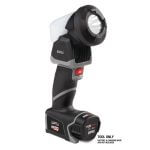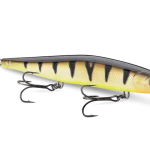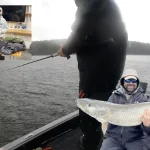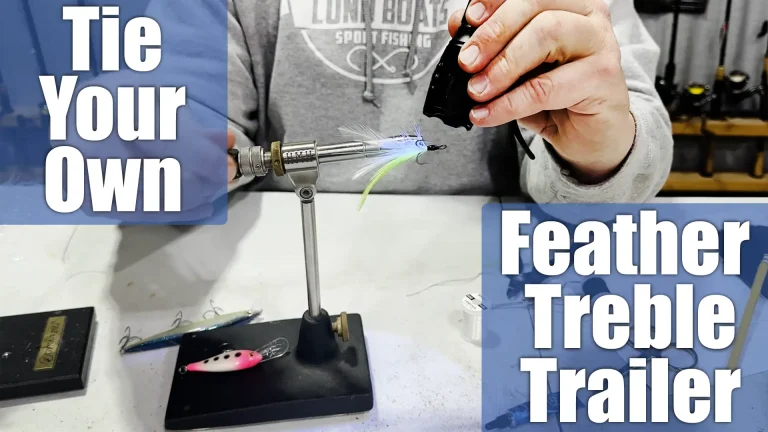James Lindner uses drop-shot rigs tipped with small softbaits to entice deepwater bluegills that are platter-sized. It’s a remarkably deadly tactic for large panfish that head deep in mid- to late summer.
Deepwater bluegill fishing can be an exciting and rewarding experience. In this article, we will explore the techniques and strategies used by the Lindner brothers to catch big bluegills in deep water. We will also discuss the importance of selective harvest and the impact it has on maintaining a quality fishery. So, let’s dive in and learn how to catch those monster bluegills!
The Hunt for Big Deepwater Bluegills
In this video, we are targeting big bluegills in deep water. They explain that bluegills often feed on a mixture of emerging insect larvae and small minnows along the edges of drop-offs. These drop-offs can concentrate schools of bluegills, making them an ideal spot to target.
We find a patch of gravel at the base of the drop-off, which is a prime feeding area for bluegills. They note that this spot is not rocky enough to attract other species like walleye or smallmouth bass, making it a perfect location for targeting bluegills specifically.
The Importance of Selective Harvest
The Lindners emphasize the importance of selective harvest when targeting big bluegills. They explain that bluegills are a limited resource and it takes a long time for them to grow to a larger size. They compare the growth rate of bluegills to that of deer, highlighting the fact that it takes about 8 years for an 8-inch bluegill to reach that size. Therefore, it is crucial to practice catch and release for larger bluegills in order to maintain a healthy fishery.
Regulations and Bag Limits
The Lindners discuss the role of regulations in balancing the harvest of larger fish with the lake’s ability to replace them. They mention that statewide bag limits may not be adequate for high-quality fisheries that are full of larger fish. It is important for anglers to be aware of and adhere to the regulations in their area to ensure the sustainability of the fishery.
Tackle and Techniques for Big Bluegills
The Lindners provide some tips on tackle and techniques for targeting big bluegills in deep water. They recommend using long rods, around 6.5 to 7 feet in length, with medium-light spinning action. These rods have soft tips to detect light bites, but also enough backbone to set the hook and fight larger bluegills.
For rigs, they suggest using slip sinker rigs dressed with small live baits like panfish leeches or live nightcrawlers. Another effective option is using drop shot rigs with tiny soft baits like crawler imitations, tubes, or insect imitations. They explain how to set up a drop shot rig using a Palomar knot and a drop shot sinker.
They also discuss the benefits of using fluorocarbon line for targeting bluegills. Fluorocarbon has less stretch than monofilament and is closer in density to water, making it almost translucent to the fish. This allows for better sensitivity and feel, which is important when dealing with light biting bluegills. The Lindners recommend using 2 to 6 lb test fluorocarbon line, which pairs nicely with a size 15 spinning reel.
The Right Rod and Reel Combo
Having the right rod and reel combo is crucial when targeting big bluegills. The Lindners suggest using a 7ft light extra-fast action rod in the panfish series. This rod has a super soft tip and loads up quickly to fight scrappy bluegills. They also recommend using a size 15 spinning reel, which matches well with the lighter rod for comfortable fishing.
The Joy of Catching Big Bluegills
The Lindners express their excitement and joy in catching big bluegills. They emphasize that catching a big bluegill can be just as thrilling and challenging as catching larger fish like pike or muskies. They highlight the importance of appreciating the beauty and challenge of catching these fish, regardless of their size.
The Impact of Technology
The Lindners discuss the advancements in technology that have made fishing more efficient and enjoyable. They showcase the Spot-Lock feature on their trolling motor, which allows them to hold their position with pinpoint precision. This feature is particularly useful when targeting bluegills in deep water, as it allows them to stay on top of the fish without constantly adjusting the trolling motor.
Conclusion
In this article, we have explored the techniques and strategies used by the Lindner brothers to catch big bluegills in deep water. We have learned about the importance of selective harvest and the impact it has on maintaining a quality fishery. We have also discussed the tackle and techniques used for targeting big bluegills, as well as the joy and excitement of catching these fish. Additionally, we have touched on the advancements in fishing technology and the power of fishing education. Overall, deepwater bluegill fishing can be a thrilling and rewarding experience, and with the right knowledge and techniques, anglers can have success in catching these monster bluegills.
When should I use a ball-bearing swivel instead of a snap swivel for fishing bluegills?
A ball-bearing swivel should be considered over a snap swivel when fishing for bluegills in specific scenarios. It is especially recommended when using certain presentations that involve slip bobbing with jigging lures that swim in circles on the fall, such as the Rapala Jigging Rap (3/16 ounce), Lindy Rattln? Flyer Spoon (1/16 ounce), and small spoons like the Kastmaster. In these cases, using a quality ball-bearing swivel helps prevent problems with line twist, which can be detrimental to your fishing experience. It is suggested to tie the smallest Sampo Ball Bearing Swivel (size 1R with split ring on each end) approximately 18 to 24 inches above your lure when employing these techniques. Additionally, when using a cast-and-crank presentation with smaller inline spinners like the Mepps, utilizing a ball-bearing swivel can also be beneficial for minimizing line twists and ensuring smooth fishing operations.
Why should I use fluorocarbon line for freshwater fishing?
Fluorocarbon line is highly recommended for freshwater fishing due to its nearly invisible nature underwater. Originally developed for saltwater anglers targeting bonefish in shallow waters, fluorocarbon line offers the advantage of being less detectable by fish, thus increasing the chances of a successful catch. Numerous manufacturers produce fluorocarbon line specific for freshwater use, making it a valuable tool for anglers seeking an edge in their fishing endeavors.
What are the advantages of using longer rods for fishing bull bluegills?
Using longer rods when fishing for bull bluegills offers several distinct advantages. One major benefit is the increased casting distance that a rod between 8 to 10 feet in length provides. This extended reach is particularly advantageous when using lightweight lures or jigs, such as those weighing 1/64 and 1/32 ounce, enabling anglers to land their casts further out. Additionally, when employing live bait with a float, a longer rod will significantly enhance the length of your casts, potentially helping to avoid spooking the wary bull bluegills found in clear natural lakes. Moreover, longer rods are essential when shore fishing, as they allow anglers to reach deeper waters when necessary. The added distance attained with a longer rod can be crucial in preventing larger bull bluegills from being scared away, ensuring a more successful fishing experience. Furthermore, the increased length of the rod provides anglers with enhanced leverage when fighting fish, as it can absorb more of the fish’s fight, thereby reducing strain on the fishing line. This aspect can be particularly vital when fishing in clear waters with lighter line weights like 2- or 4-pound-test.
What type of live baits should I use for catching bull bluegills?
For catching bull bluegills, it is recommended to use larger live baits such as whole nightcrawlers. When fishing in areas with a reputation for big bull bluegills, consider using whole nightcrawlers on single hooks below a float set at specific depths, and drifting or row-trolling a whole nightcrawler along the bottom on a regular hook and split shot rig. Bluegills have the ability to consume larger baits than one might anticipate, making larger live baits like whole nightcrawlers effective options when targeting these fish.
What are some tips for catching bluegill, especially the larger ones or “bull bluegills?”
When targeting larger bluegills, also known as “bull bluegills,” it is important to consider the following tips for a successful catch:
1. Opt for deep waters during the spring and summer seasons, as this is where larger bluegills are likely to be found.
2. Use larger live baits to attract the attention of big bluegills that may be looking for a substantial meal.
3. Consider using longer rods for increased casting distance and better control over your line.
4. Equip your setup with fluorocarbon line, which is known for its low visibility and abrasion resistance, increasing your chances of fooling wary bluegills.
5. Instead of a snap swivel, utilize a ball-bearing swivel to prevent line twists and ensure smoother movement of your bait in the water, ultimately improving your chances of enticing larger bluegills to bite.
How can I catch more bull bluegills?
To enhance your chances of catching more bull bluegills, consider the following strategies:
1. Fishing in deeper waters during spring and summer can be more productive as bull bluegills tend to move to deeper areas during these seasons. Try targeting areas with deeper water than you typically fish in.
2. Opting for larger live baits, such as whole nightcrawlers, can attract bigger bull bluegills. Using bigger bait increases the likelihood of enticing larger fish.
3. Longer fishing rods between 8 to 10 feet can provide you with increased casting distance. A longer rod allows you to reach farther distances, giving you access to a wider area of the water.
4. Utilize fluorocarbon line to improve your chances of catching bull bluegills. Fluorocarbon line is known for its nearly invisible properties underwater, making it less detectable to fish and increasing your chances of a successful catch.
5. When using a swivel, opt for a ball-bearing swivel instead of a snap swivel. A high-quality ball-bearing swivel can help prevent line twist issues, ensuring that your line stays tangle-free and improving your overall fishing experience when targeting bull bluegills.















